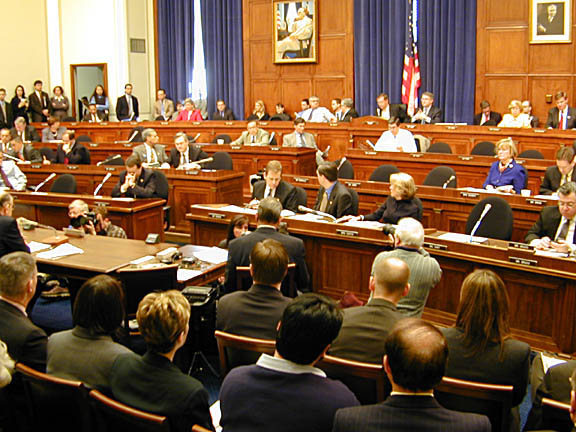
Wikipedia
Pilots ignorant of flight rules and accidents like the one that left a small drone on the White House lawn will cause the vast majority of security problems, probably the first major accident, and should be the focus of federal efforts to prevent incidents, experts told Congress this week.
Detecting and safely repelling these type of intrusions “is not simple but it is quite possible,” said GPS spoofing expert Todd Humphreys, an assistant professor at the Cockrell School of Engineering at The University of Texas at Austin.
The hearing before a subcommittee of the House Homeland Security Committee was called to help members of Congress assess what could and should be done to reduce the risk posed by the surging number of commercial and recreational unmanned aircraft.
Scott Perry, R-Pa., chairman of the Subcommittee on Oversight and Management Efficiency, noted that in 2011 a man was arrested in a plot to use drones to blow up the Pentagon and the White House. In September 2013 a drone landed within inches of German Chancellor Angela Merkel, he said.
“Lone wolf terrorists, drug smugglers, and foreign spies don’t care about (Federal Aviation Administration) rules,” said Perry. “(The Department of Homeland Security) must help protect against these bad actors perverting this technology for their objectives.”
While agreeing that the potential for the malicious use of drones was real, witnesses urged lawmakers not to focus on worst-case scenarios but on the far more likely problems of pilots that either don’t know the necessary flight rules or choose to ignore them.
“The emergence of unmanned aerial vehicles in domestic skies raises understandable concerns that may require the employment of mitigation technologies by law enforcement or security personnel, “said Gregory McNeal, associate law professor at Pepperdine University, “however before any funds are expended on such technologies agencies, should engage in a comprehensive risk assessment to identify the probable of that harm, the magnitude of a potential harm, benefits of those measures and the costs of those measures.”
“We have to bear in mind, McNeal said, that one of the significant costs is that the vast majority of drones will be used for economically and social beneficial purposes. We have to remain cognizant of that at all points in time.”
One way to approach the problem, suggested Humphreys, is to have manufacturers imbed ‘geo-fences’ in their software. The software would then use GPS coordinates to prevent their equipment from entering no-fly areas.
Imposing rules on drones that are tougher than the reasonable rules the FAA has already proposed won’t help, said Humphreys, and neither will “restricting open source autopilot platforms would hardly improve security but it would stifle innovation.”
Likewise, he said, military-style jamming or spoofing of the radio communications links between UAS and the ground or the GPS signals they use to navigation “wouldn’t stop a sophisticated attacker but would endanger commercial airliners and disrupt communications.”
“As with all revolutions there are risks that must be dealt with. The safety and security of small drones are no exception,” said Mjr. Gen. Frederick Roggero, (USAF-Ret.), the president and CEO of Resilient Solutions, Ltd. “However as the risk of these types of aircraft are reviewed we much strive to preserve and protect the overwhelming benefits that this rapidly expanding technology will bring for generations to come.”
Richard Beary, president of the international Association of Chiefs of Police asked lawmakers to clarify, however, what law enforcement officers can do when there is a UAS incident. DHS has given his agency a two-page document with recommended procedures for responding to flights of unmanned aircraft over stadiums, he said,
“We got that late in the football season in November,” he quipped.
There were, however, no details on what to do to follow up after a drone incursion or who to call for information.
There is also a pressing need he said, for officers to have identified courses of action when drones are causing problems at a crime or accident scene.
“In almost every critical situation now, there are drones flying over the top of law enforcement officers and interfering with our helicopters as we’re trying to deal with these things. Again, since these things do not have a transponder or registrations it is difficult to track down and impossible in many cases to figure where they came from.’
We’re not criticizing, Beary told lawmakers “This is a call for help.” Law enforcement needs to how to respond to these and where police procedures are going to go in the future.
“Because these devices are in their infancy,” Beary said, ‘now is the time for the federal government and the federal agencies to work with us and develop the guidelines, so that law enforcement knows what to do.”






